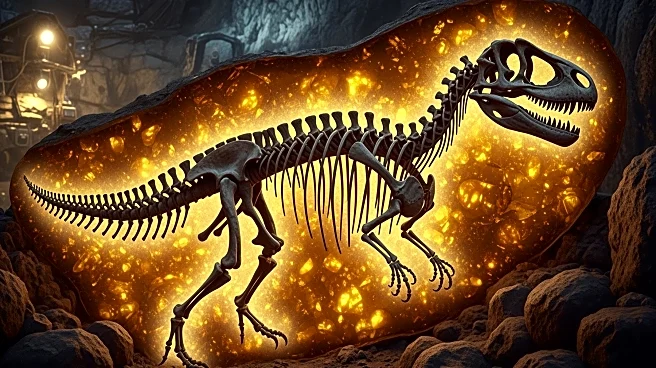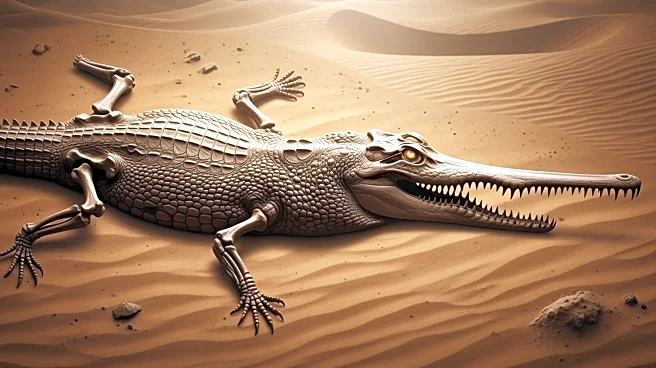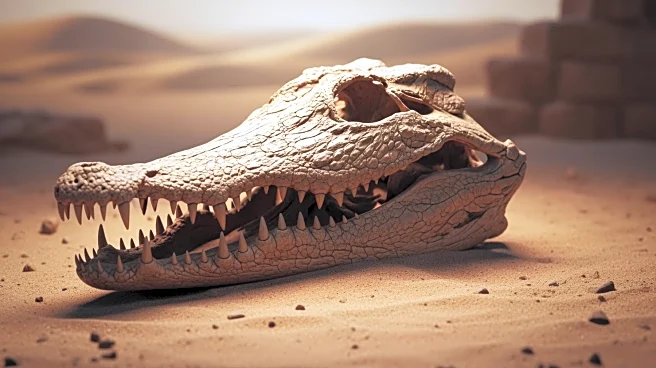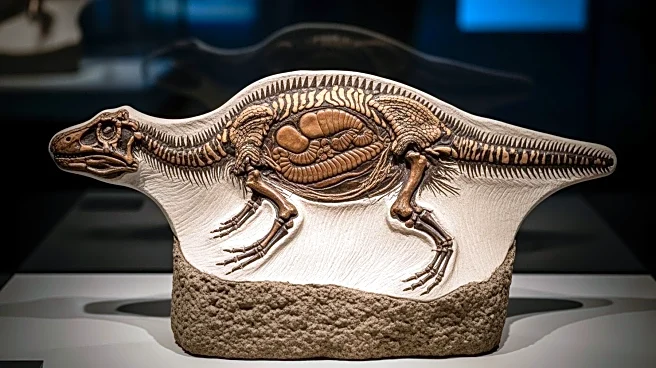What's Happening?
Miners in Alberta, Canada, have unearthed a 110-million-year-old nodosaur fossil that is remarkably well-preserved, retaining not only its skin and armor but also internal organs such as intestines. This discovery, described as a 'dinosaur mummy,' offers
an unprecedented glimpse into the anatomy and fossilization processes of dinosaurs. The fossil, now housed at the Royal Tyrrell Museum, was found accidentally during drilling operations at the Suncor Millennium Mine. The nodosaur, a heavily armored herbivore, was preserved in marine sediments, which contributed to its exceptional state. The fossil's condition is so extraordinary that scientists have been able to reconstruct its life-like appearance, complete with intact scales and soft tissue.
Why It's Important?
This discovery is significant as it provides new insights into dinosaur paleobiology, particularly in understanding the anatomy and preservation of dinosaurs. The nodosaur's intact internal organs allow researchers to study its digestive system in detail, offering clues about its diet and lifestyle. The fossil's preservation in marine sediments also raises questions about the environmental conditions of the Cretaceous period and the processes that lead to such exceptional fossilization. This find enhances our understanding of dinosaur evolution and the ecological dynamics of their time, potentially influencing future paleontological research and fossil excavation strategies.
What's Next?
Researchers will continue to study the nodosaur fossil to uncover more details about its biology and the conditions that led to its preservation. The findings may prompt further exploration of similar sites in Alberta and other regions, potentially leading to more discoveries of well-preserved dinosaur fossils. The scientific community may also revisit existing fossils with new techniques to gain additional insights into dinosaur anatomy and evolution.













